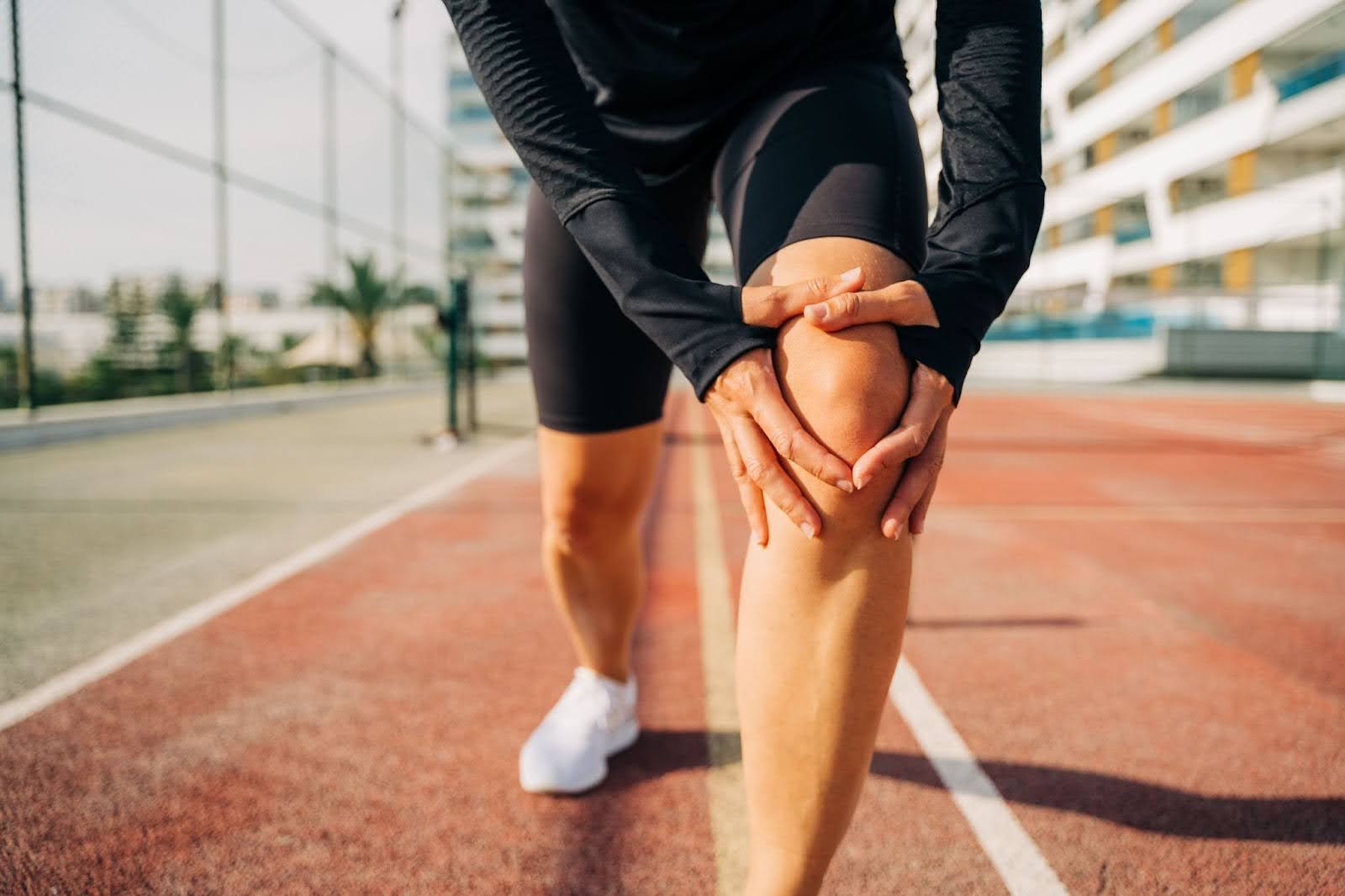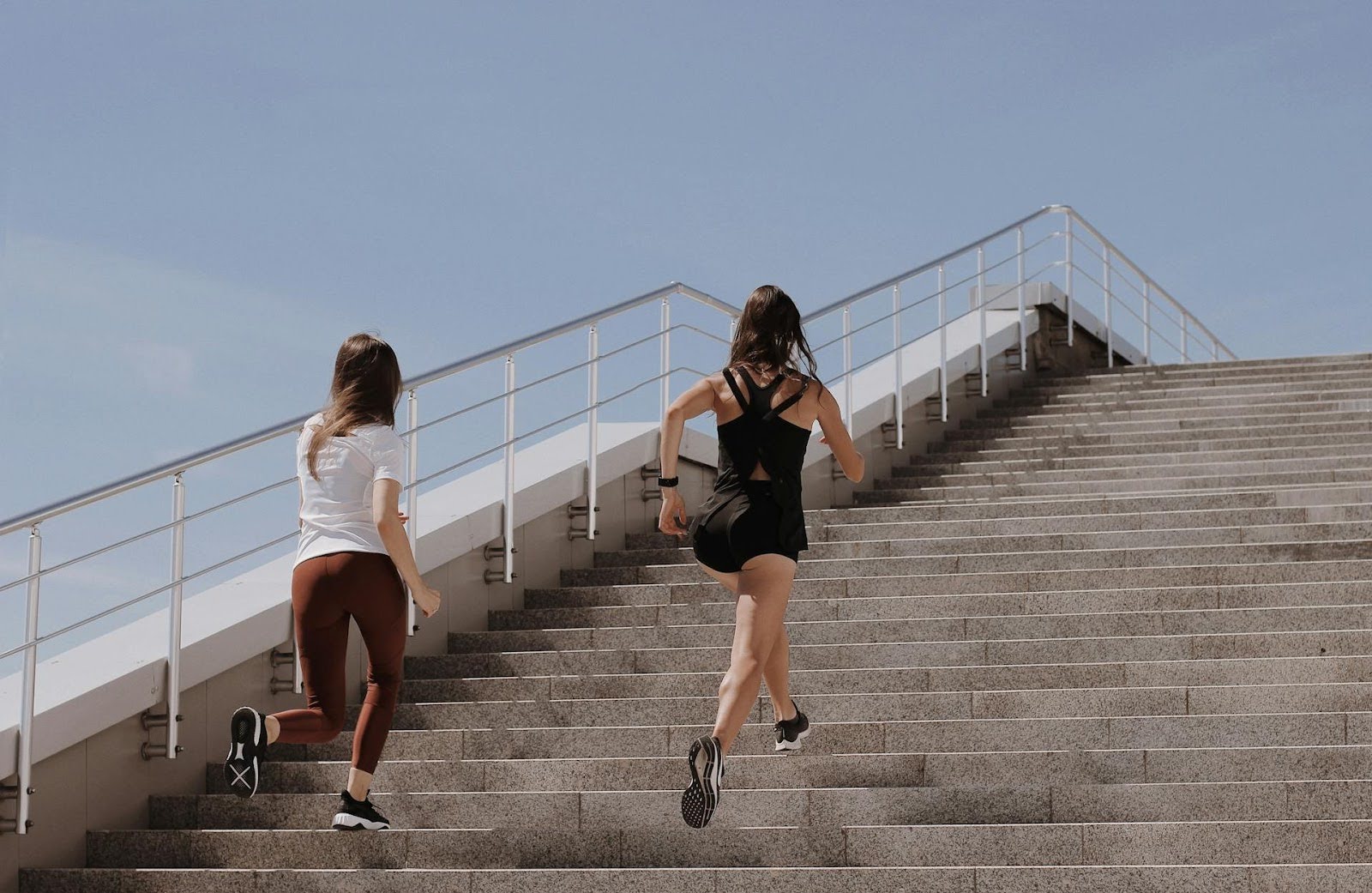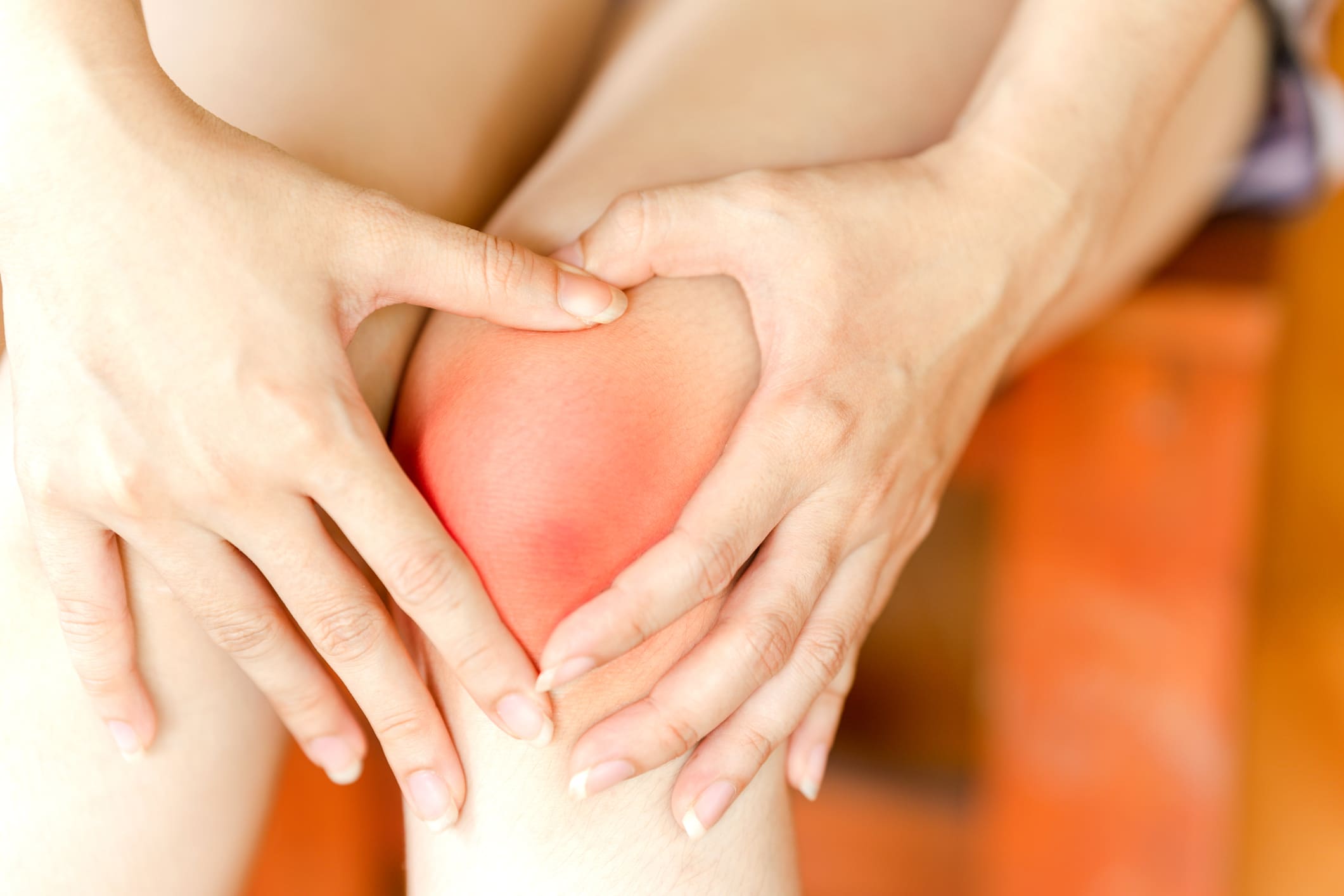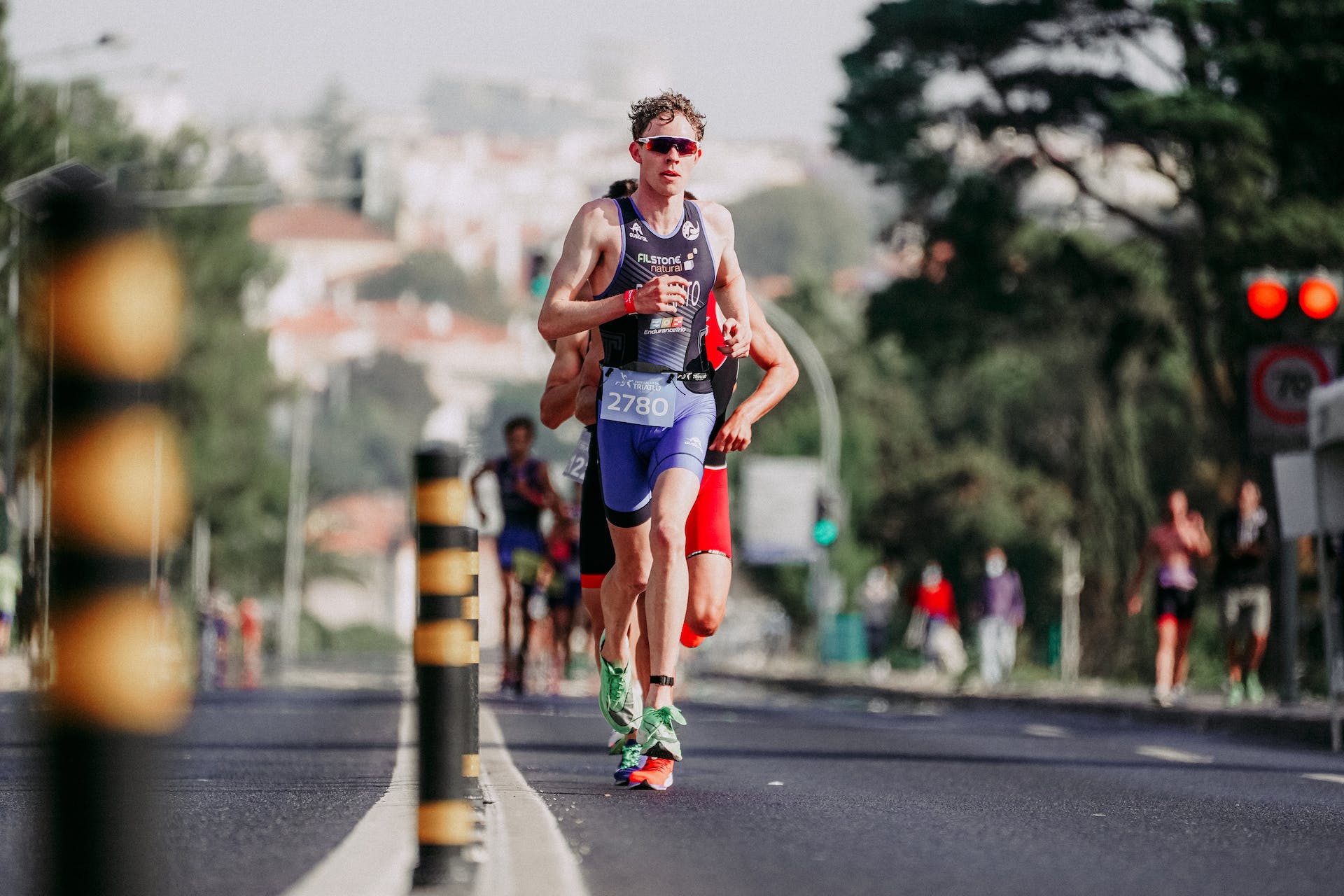Top Categories
What is Runner’s Knee?
Runner’s knee, medically known as patellofemoral pain syndrome, is a common condition characterised by pain around or behind the kneecap (patella). This condition is particularly prevalent among athletes, especially those involved in activities that require frequent knee bending, such as running, jumping, and cycling. Runner’s knee is often associated with overuse, poor form during physical activity, or inadequate strength and flexibility in the muscles supporting the knee.
Warm-Up Exercises
Warm-up exercises increase blood flow to the muscles, enhance flexibility, and improve joint mobility. This can help mitigate the stress placed on the knee during exercise.
- Walking or Light Jogging: Begin with a 5-10 minute walk or a light jog to gradually increase your heart rate and warm up the muscles.
- Leg Swings: Stand and hold onto a stable object for support. Swing one leg forward and backwards, then side to side, to loosen up the hip and thigh muscles. Perform 10-15 swings on each leg.
- Knee Lifts: Slowly lift your knee towards your chest, holding it with both hands for a few seconds before lowering it. Alternate legs and perform 10-15 lifts per leg.
- Ankle Circles: Lift one foot off the ground and rotate the ankle in both clockwise and anti-clockwise directions. Do 10 circles in each direction for both ankles.
- Butt Kicks: While standing or jogging in place, gently bring your heel towards your buttocks. Alternate between legs, aim to lightly stretch the front thigh muscles. Continue for 1-2 minutes.
- High Knees: While standing or jogging in place, lift your knees high, aiming to get them parallel to the ground. Continue this motion for 1-2 minutes to engage your core and increase your heart rate.
Strengthening Exercises
Strengthening exercises help to build the muscles that support the knee joint, particularly the quadriceps, hamstrings, and hip abductors. These exercises should be performed with a focus on form and control, and should not cause pain in the knee.
- Straight Leg Raises: Lie on your back with one leg bent at the knee and the other straight. Lift the straight leg to the height of the bent knee, hold it for a few seconds, and then lower it. Perform 10-15 repetitions for each leg.
- Clamshells: Lie on your side with your knees bent and feet together. Keeping your feet together, open your top knee as far as possible without rotating your hip. Hold briefly, then close. Perform 10-15 repetitions on each side.
- Wall Squats: Stand with your back against a wall, feet shoulder-width apart. Slide down the wall into a squat position, keeping your thighs parallel to the floor. Hold for 10-30 seconds, then slide back up.
- Step-Ups: Stand in front of a step or a low bench. Step up onto the bench with one foot, followed by the other, and then step back down. Perform 10-15 repetitions for each leg.
- Hamstring Curls: Lie flat on your stomach. Slowly bend your knee to bring your heel towards your buttock, then lower it back down. Perform 10-15 repetitions for each leg.
- Side Leg Raises: Lie on your side with your legs extended. Raise the top leg upwards, keeping it straight, then lower it back down. Perform 10-15 repetitions for each side.
These exercises should be performed two to three times a week, allowing for rest days in between to avoid overworking the muscles. Gradually increase the intensity and repetitions of these exercises as strength improves, ensuring to avoid any movement that exacerbates knee pain.
Stretching Exercises
Stretching exercises help to improve flexibility, reduce muscle tension, and maintain a good range of motion in the knee joint. These exercises should be performed gently and without forcing any movement that causes pain.
- Quadriceps Stretch: Stand and hold onto a stable surface for balance. Bend one knee and bring your heel towards your buttock, holding your ankle with your hand. Keep your knees close together and gently push your hip forward to feel a stretch in the front of your thigh. Hold for 20-30 seconds and repeat on the other side.
- Hamstring Stretch: Sit on the ground with one leg extended and the other bent so your foot is flat against the opposite inner thigh. Lean forward from your hips towards the foot of the extended leg. Hold for 20-30 seconds and repeat on the other side.
- Calf Stretch: Stand facing a wall with one foot in front of the other. Keeping the back leg straight and the heel on the ground, lean forward towards the wall to stretch the calf of the back leg. Hold for 20-30 seconds and switch legs.
- IT Band Stretch: Stand near a wall for support. Cross your left leg behind your right leg. Lean to your right side and push your left hip outwards until you feel a stretch along the outer thigh and hip. Hold for 20-30 seconds and switch sides.
- Hip Flexor Stretch: Kneel on one knee, with the other foot in front. Push your hips forward until you feel a stretch in the front of your hip. Keep your back straight and avoid arching your back. Hold for 20-30 seconds and switch sides.
- Butterfly Stretch: Sit with the soles of your feet together and your knees bent out to the sides. Hold onto your feet and gently press your knees towards the floor. Lean forward slightly to deepen the stretch. Hold for 20-30 seconds.
These stretching exercises are recommended after the warm-up and strengthening exercises. They can also be done independently to maintain flexibility.
Cool-Down Exercises
Cool-down exercises help to gradually lower the heart rate, prevent muscle stiffness, and enhance overall recovery. Here are effective cool-down exercises:
- Gentle Walking: After intense activity, reduce your pace and walk gently for 5-10 minutes. This aids in gradually reducing the heart rate and initiating muscle recovery.
- Static Stretching: Perform static stretches similar to those in the stretching exercises section. Focus on the quadriceps, hamstrings, calves, and hip flexors. Hold each stretch for 20-30 seconds.
- Foam Rolling: Using a foam roller can help release muscle tightness and improve blood flow. Gently roll over the thighs, calves, and IT band, focusing on areas of tightness but avoiding rolling directly on the knee joint.
- Leg Elevation: Lie on your back and elevate your legs against a wall or on a pillow. This position can help reduce swelling and improve circulation in the legs.
- Yoga Poses: Gentle yoga poses such as Child’s Pose, Cat-Cow Stretch, and Legs-Up-The-Wall can be soothing and help in elongating and relaxing the muscles.
The cool-down should be a relaxing and low-intensity period. Pay attention to any signals from your body, particularly in the knee area, and avoid any movement that causes discomfort or pain.
When to Seek Medical Advice for Runner’s Knee Pain
While runner’s knee can often be managed effectively with exercises, it’s important to recognise when to seek advice from your sports medicine specialist.
- Persistent or Worsening Pain: If knee pain persists despite rest and exercise, or if the pain worsens, it’s important to consult your sports medicine specialist.
- Swelling and Redness: Significant swelling or redness around the knee, especially if accompanied by warmth to the touch, can indicate an underlying condition that requires medical attention.
- Limited Mobility: Difficulty bending or straightening the knee, or experiencing a sensation of the knee ‘locking’ or ‘giving way’.
- After an Injury: If knee pain begins after a specific injury, such as a fall or collision, a medical assessment is necessary to rule out fractures or ligament damage.
- No Improvement with Home Care: If there is no improvement in symptoms after several weeks of home exercises and rest, your sports medicine specialist can offer additional treatment options.
- Other Symptoms: Experiencing symptoms such as fever, severe pain that wakes you from sleep, or significant joint deformity alongside knee pain, should prompt immediate medical consultation.





